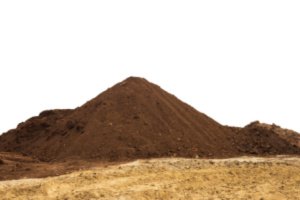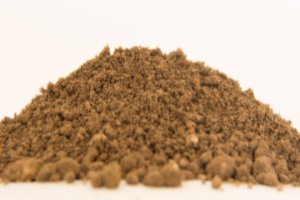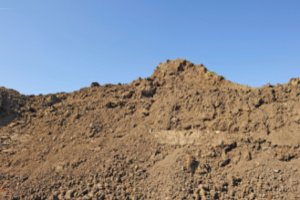To the untrained eye, all soil may appear similar. For some projects, any type of dirt may suffice – however, when it comes to topsoil and fill there are some important distinctions to be aware of. Here is a closer look at what sets topsoil and fill dirt apart and when they can be used interchangeably.
What Is Topsoil?
Topsoil comes from the top layer of the ground and is rich in organic matter and healthy nutrients. It is often used for growing vegetables and plants in gardens and pots, and tends to be darker in color than other types of dirt and is also more expensive.
What Is Fill Dirt?
Fill dirt is a mixture of broken rocks, clay and sand. It does not contain a lot of nutrients or organic matter, so it is not ideal for plant growth. Fill dirt typically comes from clearing farmland, old road beds, or forests, and it is made for filling in hollow areas of land or raising grades and contouring hills.
Are Topsoil and Fill Dirt Interchangeable?

If you have extra topsoil on hand and are thinking of using it as fill dirt, there are a few things to keep in mind.
First, topsoil is considerably looser than fill dirt. As a result, it is more prone to shifting and settling. While it can still be used for filling holes, a greater volume of topsoil will be needed.
Another consideration is cost. Topsoil is significantly more expensive than fill dirt, which means it is not a very practical choice for filling large spaces – particularly when you factor in the higher volume that is needed to account for its tendency to settle.
The type of project must also be considered. Topsoil is not suitable for foundations due to its organic matter content. This can cause the topsoil’s volume to change over time as its organic matter naturally breaks down, leading to the shifting of foundations and other structures built on top of it.
Topsoil is also not recommended for land grading. Low points might initially be filled to a point that is level with the surrounding land, but over time, the inevitable change in the volume of topsoil would cause the low point to eventually return.
Buying Fill Dirt
Topsoil should be reserved for gardening projects. When an area needs to be filled with dirt, it is best to purchase dedicated fill dirt. Here is a look at the types available.
Clean Fill Dirt

Clean fill is dirt that is free of materials that are deemed dangerous to humans, the environment and animals. Although some people believe that it has also been screened and is free from debris, that is not true. Instead, the term “clean simply refers to the fact that it is environmentally clean.
Clean fill dirt does not contain corrosives, noxious materials, radioactive substances or combustibles. This means it is amenable to projects where environmental friendliness is important, such as landscaping. It is a good choice for use in parks or for filling in holes in a yard. It also serves well as subsoil for flower beds.
Screened Fill Dirt
Screened fill dirt is a variety of clean fill dirt that has been placed in a dirt screening machine to remove any debris that is larger than a certain size (typically 5/8 of an inch). Although the screening process makes this type of fill dirt slightly more expensive than common fill dirt, the absence of heavy rocks and clay makes it easier to work with when spreading with a wheelbarrow and shovel.
Screened fill dirt is ideal for home landscaping projects, such as holes in a yard that need to be filled in to support a lawn or garden.
Common Fill Dirt
Common fill dirt is one of the most affordable types of fill dirt as it is dug directly from the ground and is not cleaned, tested or screened. This means it typically contains rock and plant roots as well as clay. As a result, it can be difficult to work with common fill dirt by hand.
Common fill dirt is chosen for elevating significant areas of space – thanks to its affordable nature. However, heavy construction equipment is needed to move and spread it, so it is not suitable for smaller projects. Some dirt suppliers and construction companies that dig up grounds for projects offer common fill dirt for free.
Select Fill Dirt
Select fill dirt is a type of dirt that has been screened to remove organic material and large debris, much like screened fill dirt. However, it is then tested by a soil engineer to ensure it suits the needs of a specific project.

Select fill dirt is typically composed of gravel and clay, which are chosen because they are unlikely to shift over time. The exact composition of select fill dirt can vary depending on the area of the country in which it is used – as it is often produced according to what is safest for construction in the local area.
Select fill is typically used underneath the concrete foundations of buildings. It is imperative that the fill dirt in such applications does not shift or settle over time, and testing it is a way of guaranteeing the structural integrity of whatever is built upon it. Due to so much preparation going into the production of select fill, it is typically the most expensive type of fill dirt.
Other Types of Fill Dirt
There are also specialty types of fill dirt that are available for specific projects. For example, septic fill dirt is used to fill in the area around septic tanks, but rock fill dirt, with its high quantities of stone, is used to fill large holes in areas where planting is not expected to take place.
Arrange Your Fill Dirt Delivery
If you are looking for an affordable source of high-quality fill dirt in the Northern Virginia area, get in touch with the team at Dirt Connections. Our dirt delivery service can ensure you have the right resources to complete your project successfully.
Summary

Dirt Connections was started with one goal in mind: providing quality residential and commercial construction services to clients on time and on budget. Reach out for more information on how we can support your next project.
For your convenience our estimates are free and by appointment. Call 703-940-9949 for a free estimate today!










































